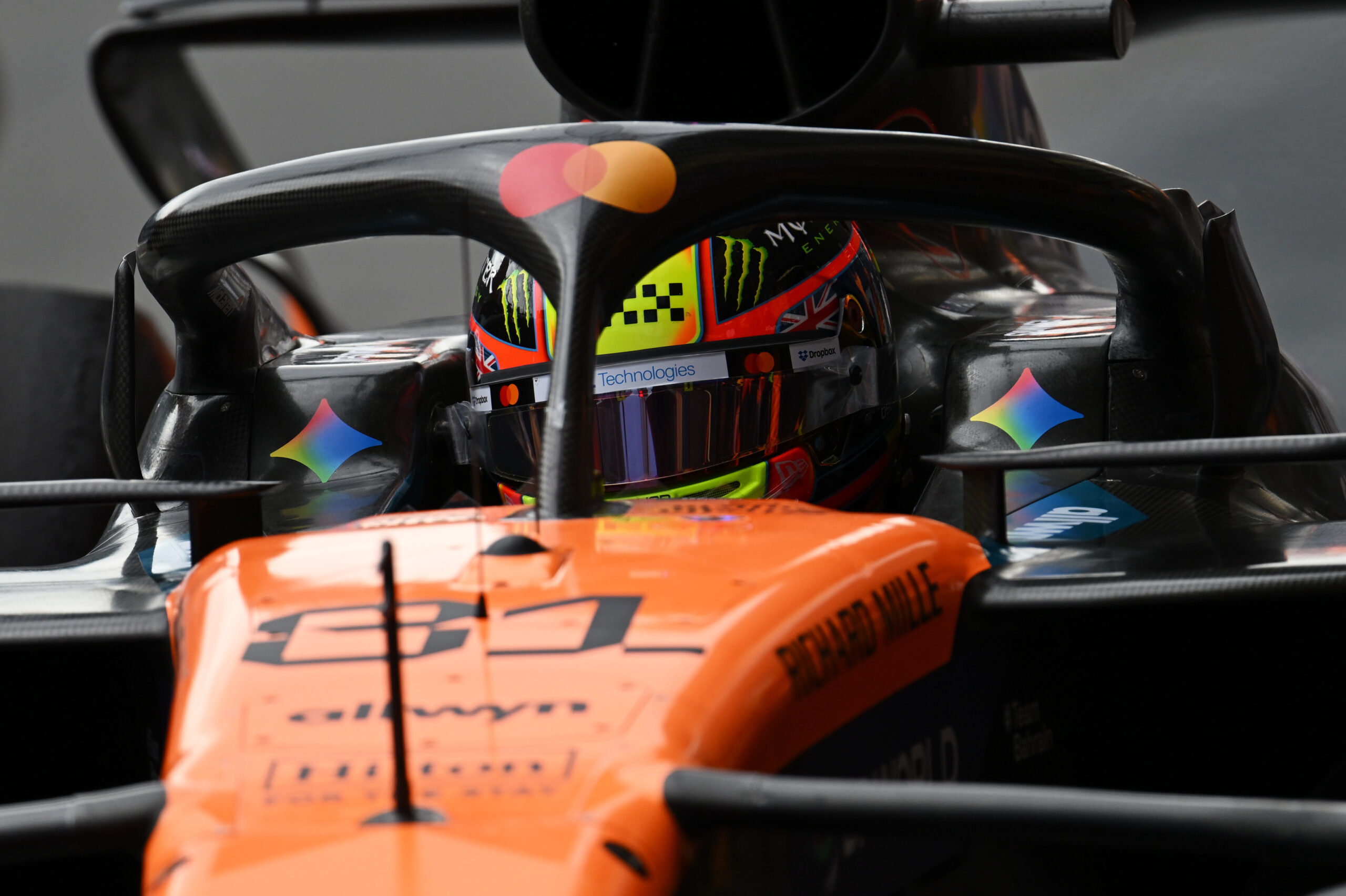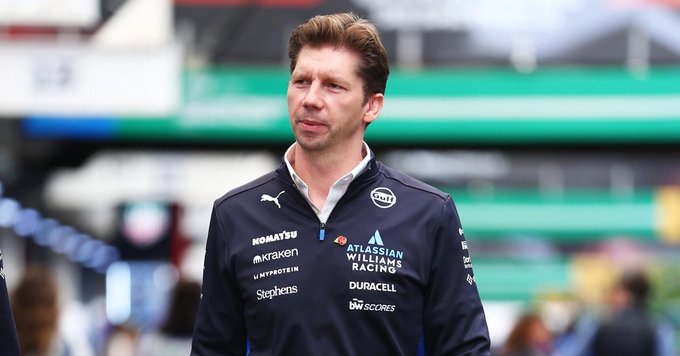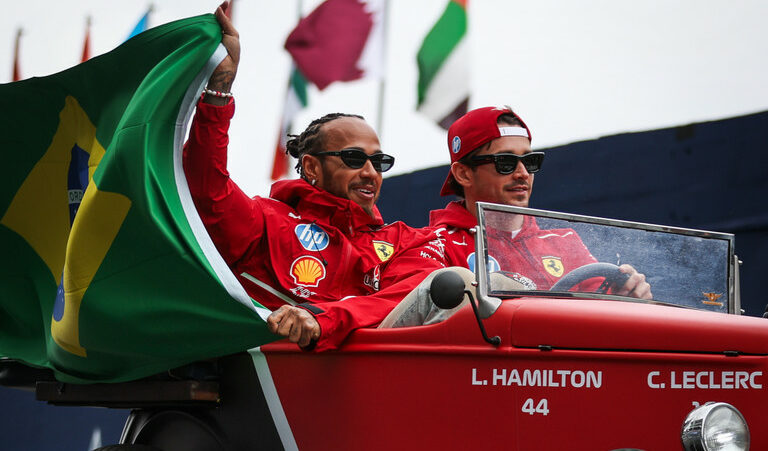The misjudgement that saw Charles Leclerc slip from pole to 6th (only to be later disqualified post-race due to a technical infringement) in Austin was just the latest instalment in a saga that spans almost five seasons.
The only real consolation might be Frédéric Vasseur’s honesty and willingness to concede that the decisions made by the pit wall cost their driver, something his predecessor was often reluctant to admit. But even that may not be enough to keep disenchanted fans on their good side as the team seemingly continues to be stuck in a loop, doomed to repeat the same mistakes over and over again.
Ferrari’s mistakes often elicit a sense of déjà vu—which in turn suggests a lack of growth and comprehension, a failure to draw the necessary conclusions in order to avoid those pitfalls in the future. For a team of Ferrari’s calibre, that’s not only disappointing: it’s troubling.
What happened in Austin is largely reminiscent of Leclerc’s fate in the Mexican Grand Prix in… 2019. Having started on pole, the Monégasque ultimately missed out on a spot on the podium after falling victim to a suboptimal two-stop strategy (and a slow pit stop), while those around him proved it was possible to opt for a one-stopper.
A significant portion of Ferrari’s self-inflicted adversities can be attributed to their overreliance on pre-race simulations. This translates to a rigid, conservative approach; an inability to adapt to changing conditions and circumstances and act accordingly, even if it means abandoning whatever strategy the pit wall had prepared beforehand. And when the team does decide to think outside the box, the call generally comes too late, after the window of opportunity has already closed.
Unfortunately for Leclerc, he’s usually the one bearing the brunt of Ferrari’s less than successful strategic operations.

Photo credit: Scuderia Ferrari
In 2022, Leclerc’s hopes of finally winning on the streets of Monaco were dashed when Ferrari made not one, but two critical errors in the wet-to-dry race. Although Leclerc clearly communicated a preference for a direct wet to slick tyre change, he found himself completing a stint on intermediates. When he was finally called in for slicks, he ended up losing time behind teammate Carlos Sainz as both were instructed to box. Realising their mistake, the pit wall attempted to abort the call via Leclerc’s race engineer, but by that point he had already made it into the pitlane. He emerged in fourth, where he remained for the rest of the race.
Just a few races later, at Silverstone, Ferrari would make yet another controversial strategic decision, once again at Leclerc’s expense.
Leclerc and Sainz were running 1-2 when the safety car came out in the closing stages of the race. As drivers started diving into the pitlane, Ferrari instructed Leclerc to stay out while Sainz pitted for softs. Although Leclerc had the same idea, he was told that by that point it was “too late” to course-correct. The team evidently misjudged the tyre performance, assuming the degradation on the softs would be higher than it actually was. This left Leclerc vulnerable at the restart as all the drivers on fresher tyres muscled their way past him, including Sainz. Despite defending valiantly as Pérez and Hamilton closed up, fourth at the flag was all he could manage given the circumstances.
These two incidents in particular created the impression that Sainz is the more cerebral of the two Scuderia drivers, praised for his wit and assertiveness over team radio. However, that’s not exactly an accurate picture.
For Leclerc, it’s not a case of speaking up, but rather of being heard. Of his feedback, his suggestions, being acknowledged and genuinely taken into consideration.
Budapest provided the perfect opportunity for a much-needed win—or, at the very least, a return to the podium—with main rival Max Verstappen unexpectedly qualifying below expectations on a track where most will agree overtaking is difficult. While Leclerc showed great pace on the medium tyre, Verstappen was quickly making up ground. As the rules stipulate that drivers must fit at least two different compounds during the race, Ferrari made the ill-fated decision to pit Leclerc for hards—a curious choice, considering the team hadn’t run the compound on Friday, and those that had, found they were lacking performance. Once Leclerc switched to the hard tyre he immediately began struggling for grip, allowing Verstappen to overtake him—twice. The Monégasque was consequently forced to make an additional pit stop to correct Ferrari’s mistake; he finished the race on softs, crossing the line sixth as Verstappen stormed to victory.
“Oh my god, the hards were so bad. That’s why I said I wanted to stay on the mediums for as long as possible,” Leclerc said over team radio afterwards.
By the summer break Ferrari’s title hopes were hanging by a thread. The Belgian Grand Prix saw Leclerc starting from the back of the grid after taking a power unit penalty. In a race that was mostly about damage limitation and making up positions, Ferrari decided to gamble and pit their driver with two laps remaining, hoping to pick up an extra point for the fastest lap. In an exchange with his race engineer, Leclerc expressed his feelings on the move, stating that he doesn’t feel it’s worth the risk. The team insisted, and after a brief battle with Alonso, Leclerc regained fifth… only to pick up a five-second time penalty for speeding in the pitlane during a pit stop he was reluctant to attempt in the first place. Meanwhile, the extra point for the fastest lap went to Verstappen.

Photo credit: Scuderia Ferrari
The team’s strategic missteps and alternative tyre choices have increasingly started hampering Leclerc not just on race day, but on Saturdays, too. Poor timing and a bizarre split strategy cost the driver in qualifying ahead of 2022’s São Paulo sprint, where he was the only driver sent out on intermediate tyres on a drying track.
Leclerc once again found himself at odds with his team when a similar scenario played out during qualifying ahead of this year’s Canadian Grand Prix. He recognised that a drying circuit provided the opportunity to make the switch to slicks and communicated this to his race engineer, hoping to mimic Williams driver Alex Albon. The team declined Leclerc’s request in favour of keeping him out on intermediates; by the time they sent him out on slicks, the rain started picking back up again, resulting in a frustrated Leclerc failing to make it into Q3.
The driver Charles Leclerc is arguably most often compared to—due to their age, their shared history in karts, and some career parallels—is Max Verstappen. But their paths slowly began to diverge after 2019. While Ferrari endured their worst season in 40 years, Red Bull slowly worked their way up. Verstappen’s win in Abu Dhabi in 2020—a track that had historically been a happy hunting ground for Mercedes in the turbo hybrid era—was a sign of things to come.
Verstappen would go on to secure three consecutive World Championships, placed at the heart of a dominant project that has allowed the Dutchman to grow into what many believe to be the most complete version of himself. Leclerc, meanwhile, would struggle through an unexceptional season in the midfield and a half-baked title challenge, riddled with strategic errors, technical shortcomings, and internal political upheaval.
The 2023 season is slowly drawing to a close, and as it stands, Ferrari has their work cut out for them when it comes to stamping out these costly recurrent blunders.

Photo credit: Scuderia Ferrari
With his Ferrari contract expiring at the end of 2024, Leclerc finds himself at an impasse.
Red Bull’s dominance and the promising form of teams such as McLaren—who have slowly but surely started closing the gap to the current champions—will likely make it difficult for the Scuderia to return to winning ways before 2026.
On the other hand, however, there are no obvious, immediate alternative options available for Leclerc—no other team where he could expect to be placed at the centre of the project and be afforded the room to grow into a lead driver role right off the bat.
For his part, Leclerc maintains that he’s committed to Ferrari, often reiterating his desire and determination to win championships in red. As it stands, a contract extension feels inevitable.
However, despite his fondness for the team whose tapestry he’s been irrevocably woven into since 2016, Leclerc refuses to be driven purely by sentiment when it comes to making decisions about his future in the sport.
In a recent interview he conceded that he’s prepared to walk away if he feels he no longer has faith in the project: “I view it in a way that whenever I won’t believe in the project anymore, that probably will be the time when I’ll have to go away.”
Ferrari and Leclerc’s shared future can still be bright and magnificent—provided the team learns from past shortcomings and begins to reciprocate Leclerc’s commitment and loyalty in earnest, not just through their words, but also through their actions.





